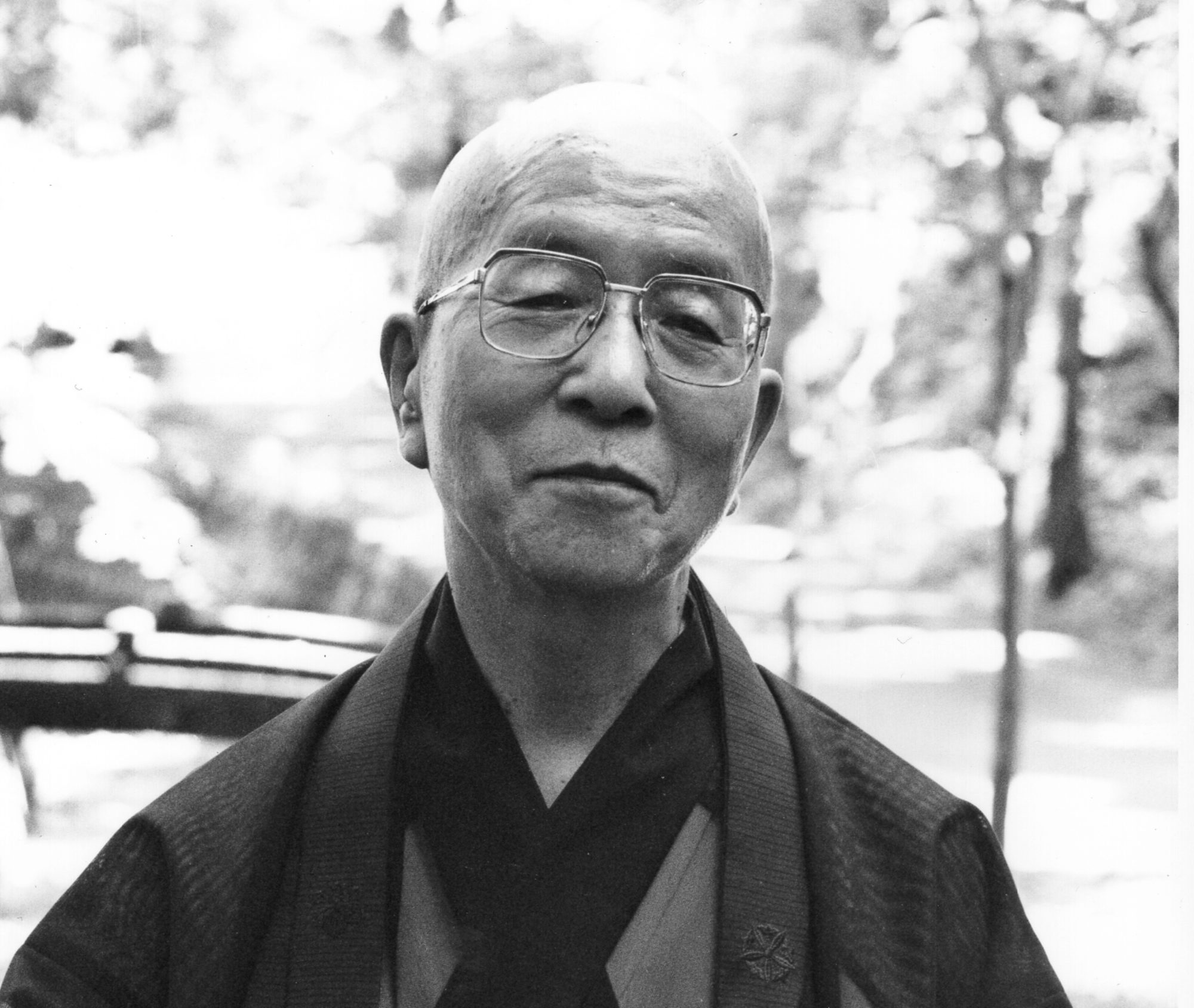Buy Shobogenzo Volumes on Amazon as Kindle eBooks or paperbacks
This translation, supported by the Japan Foundation, makes a strong claim to be the definitive translation of the 95 chapter edition of Shobogenzo, the essential Japanese Buddhist text, written in the 13th century by Zen Master Dogen. The translation adheres closely to the original Japanese, with a clear style and extensive annotations.
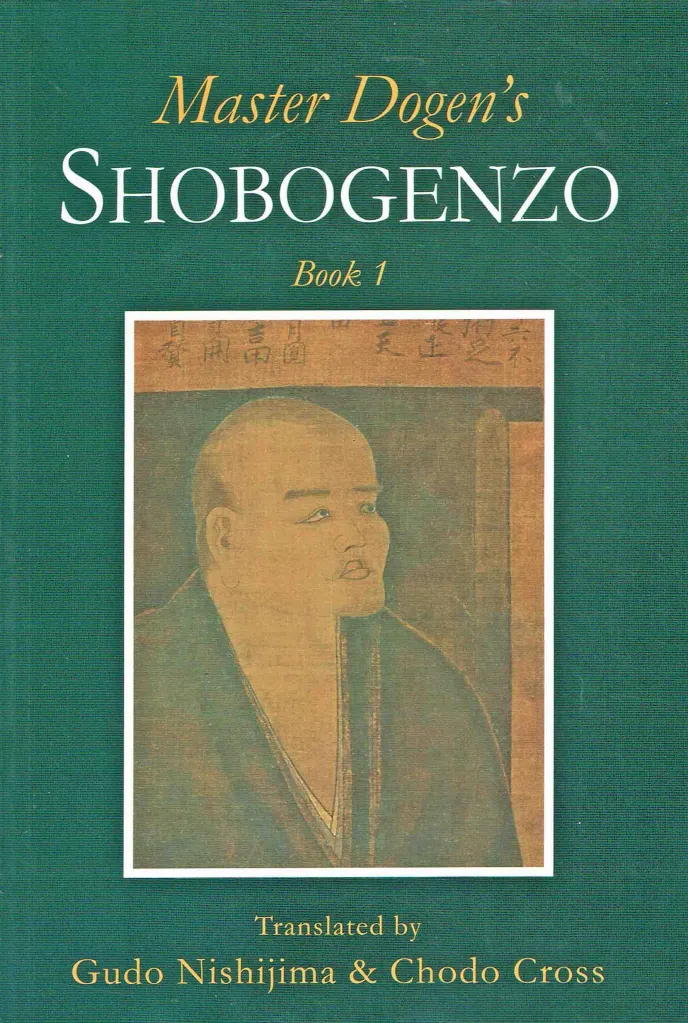
Book 1 presents translations of twenty-one chapters of Shobogenzo including Genjo-koan (The Realized Universe), Soku-shin-ze-butsu (Mind Here & Now is Buddha), Uji (Existence-Time), and Sansuigyo (The Sutra of Mountains & Water). Its several reference sections include a Chinese/English appendix of references to the Lotus Sutra, and an extensive Sanskrit glossary. ‘At last I visited Zen Master Nyojo of Dai-byaku-ho mountain, and there I was able to complete the great task of a lifetime of practice. After that, at the beginning of the great Sung era of Shojo, I came home determined to spread the Dharma and to save living beings, it was as if a heavy burden had been placed on my shoulders….I will leave this record to people who learn in practice and are easy in the truth, so that they can know the right Dharma of the Buddha’s lineage. This may be a true mission.’
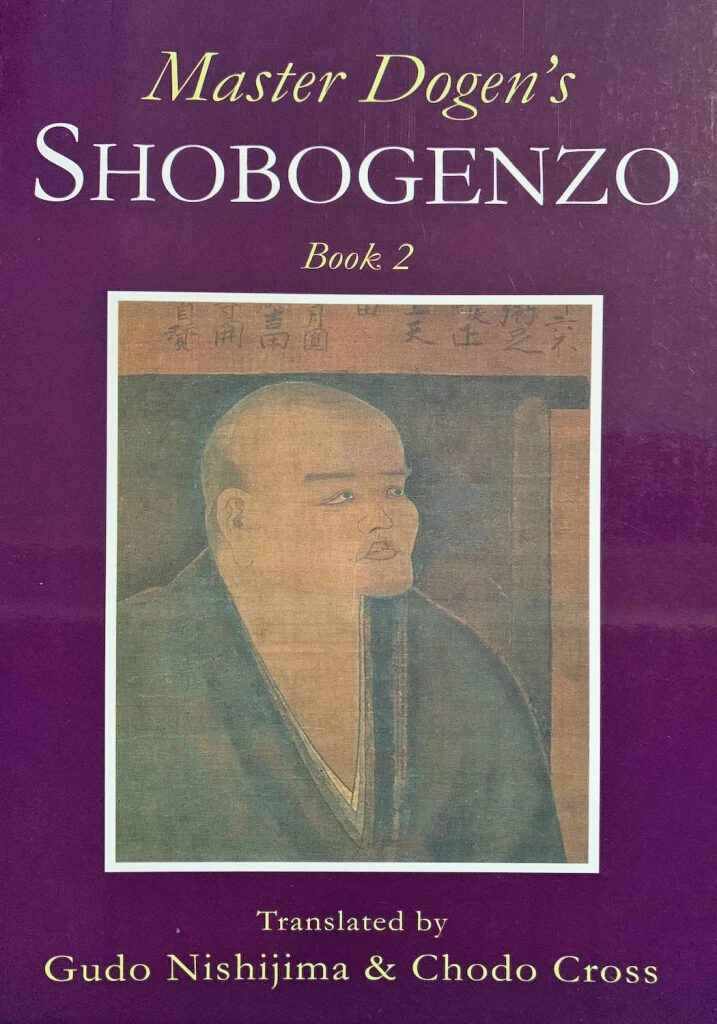
The second book in this four volume set contains chapters 22 to 41 from the 95-chapter edition, including these well-known chapters: Bussho (Buddha Nature); Daigo (Great Realization); Gyoji (Conduct and Observance); Inmo (This); and Shinjin-gakudo (Learning the Truth with Body and Mind). Book 2 maintains the highest standards of translation, with a clear style that rigorously follows the original words of Master Dogen. Ample footnotes, including Japanese and Chinese characters, explanatory text, and cross-references to other works, provide the reader with a wealth of supplementary information. Also included are a Sanskrit glossary of terms, and a list of Pinyin equivalents to the Japanese readings of Masters’ names. ‘The water is clean, right down to the ground, Fishes are swimming like fishes. The sky is wide, clear through to the heavens, And birds are flying like birds. …children and grandchildren of the Buddhist patriarchs should unfailingly learn in practice that sitting in Zazen is the one great matter. This is the authentic seal which is received and transmitted one-to-one.’
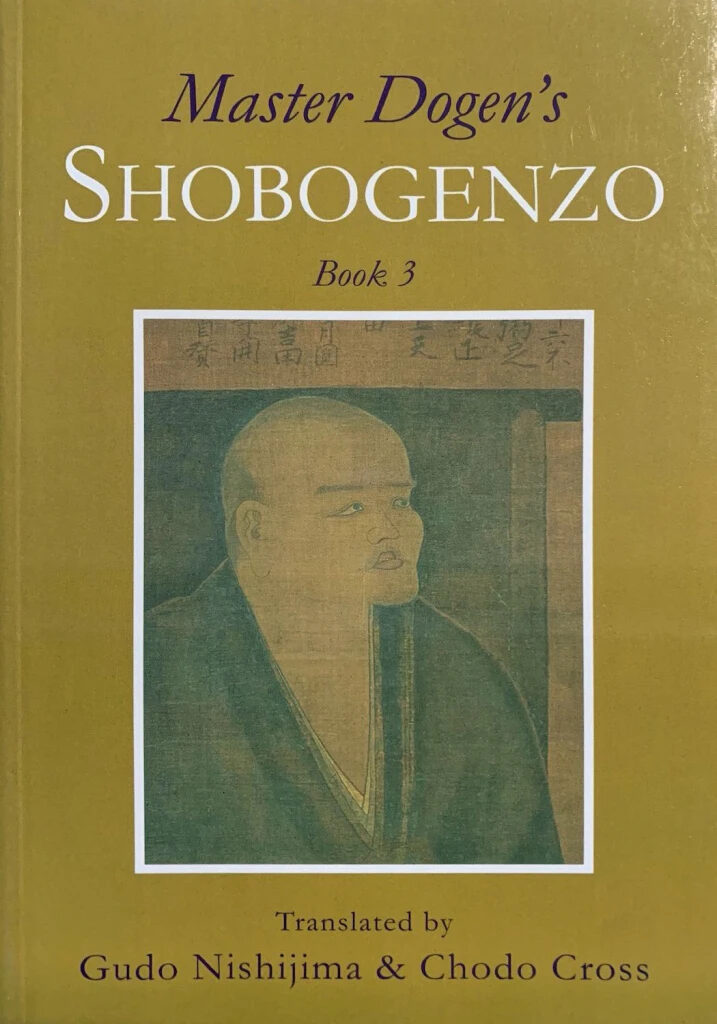
The third book in this four-volume set contains chapters 42 to 72 from the 95-chapter edition, including: Tsuki (The Moon); Kuge (Flowers in Space); Mujo Seppo (All Things and Phenomena Preach Dharma); Kajo (Daily Life); and Zanmai-O-Zanmai (Samadhi, King of Samadhis). Book 3 maintains the highest standards of translation, with a clear style that rigorously follows the original words of Master Dogen. ‘The first Patriarch, the Venerable Bodhidharma, after arriving from the west, passed nine years facing the wall at Shorin-ji temple on Shoshitsu-ho peak in the Sugaku mountains, sitting in Zazen in the lotus posture. From that time through to today, brains and eyes have pervaded China. The lifeblood of the first Patriarch is only the practice of sitting in the full lotus posture.’
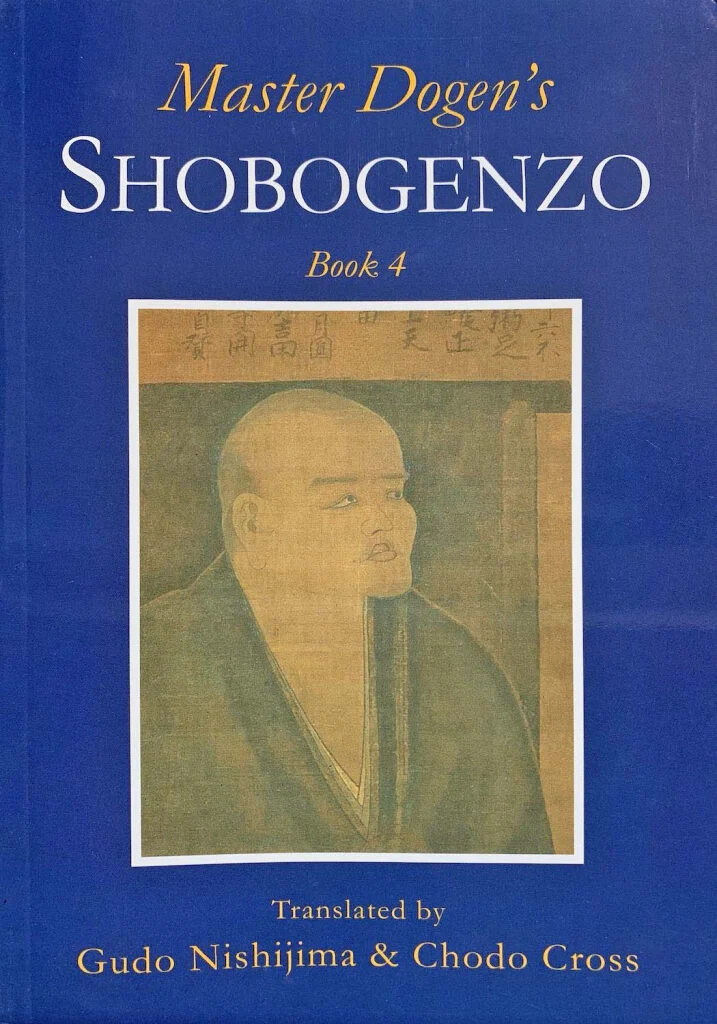
Shobogenzo Book 4, the final book in this four volume set, contains chapters 73 to 95, plus two additional chapters in the Appendices. Well-known chapters include Dai Shugyo (Great Practice); Shukke (Transcending Family Life); and Shoji (Life and Death). Book 4 maintains the highest standards of translation, with a clear style that rigorously follows the original words of Master Dogen. ‘In learning the state of truth, we should, as the practice thereof, without fail diligently practice Zazen. This has been transmitted between buddhas without interruption from ancient times to the present. When we become buddha, we do not do so apart from this [practice]. Being transmitted by buddha, it is beyond human supposition. Only people who have experienced, in the mountain-still state, the Zazen that is different from thinking, are able to grasp it.’
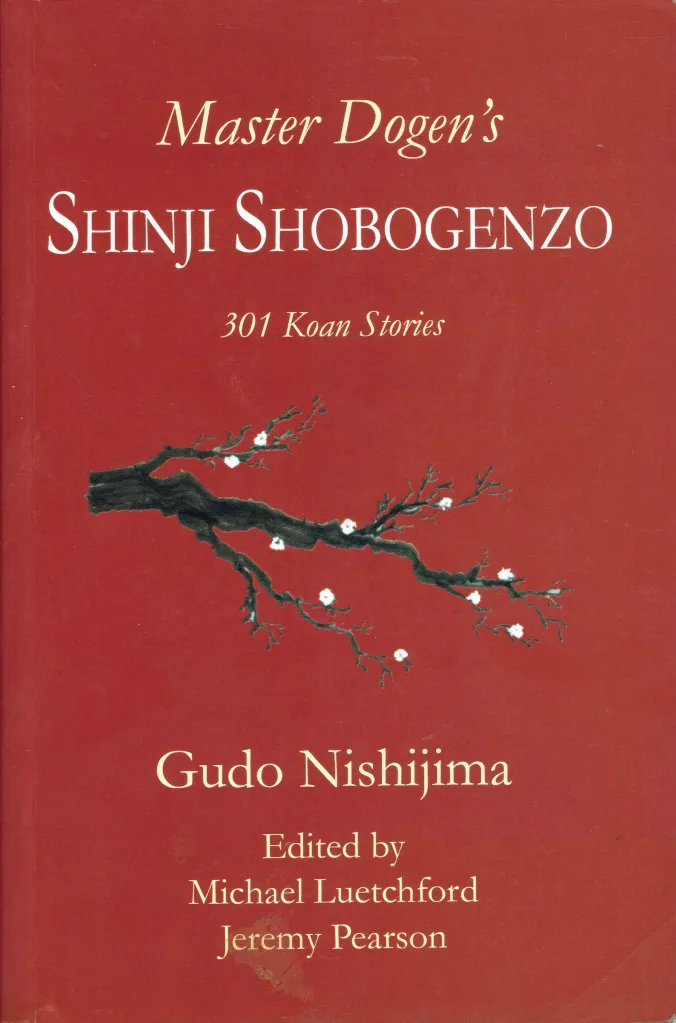
The Shinji Shobogenzo is collection of three hundred and one Chinese koans: stories describing the teachings, conversations, and actions of ancient Buddhist masters. It was compiled in the 13th century by Master Dogen, the founder of the Soto Sect of Buddhism and one of the most brilliant philosophers in Japanese history. This essential collection encompasses many of the well-known koan stories and other interesting and less familiar ones, and is presented here together with a commentary by Gudo Nishijima Roshi, a contemporary Buddhist master renowned for his clear and no-nonsense approach.
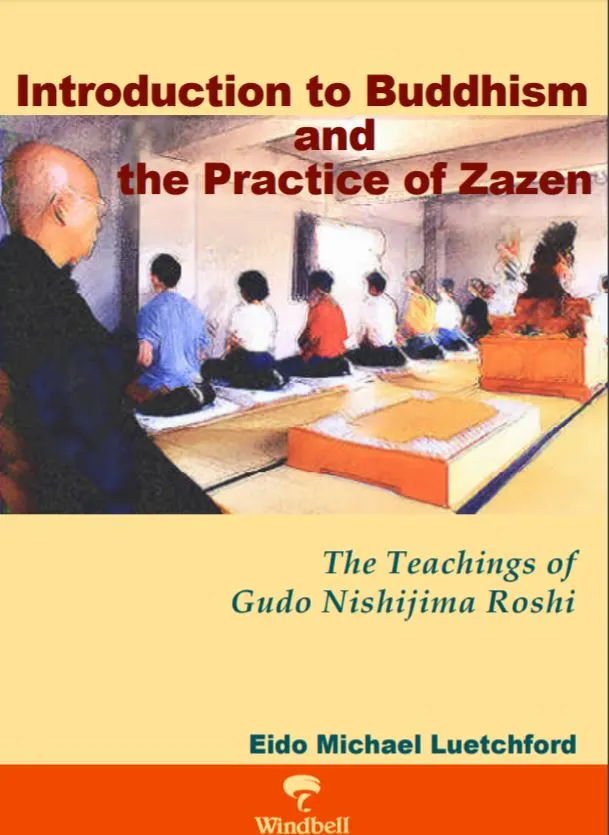
Nishijima Roshi wrote a small book in the early 1970s titled “How to Practice Zazen”, now long out of print, on which this book is based. In the foreward, he writes, “Among the flood of English books on Buddhism, there are relatively few books that explain true Buddhism based on Master Dogen’s teachings. I am happy if this book fulfulls its purpose in introducing the essential Buddhist viewpoint to the world.”
This booklet is also available from Amazon in French, Italian and Spanish.
You can also download it as a PDF in Czech and Finnish from the Dogen Sangha website.

This book is an attempt to explain what it means to ‘meet Buddhism.’ In the author’s thought and experience, to meet Buddhism is to meet the Truth, face to face. The face-to-face encounter with the Truth is not a matter of intellectual understanding. It is not something remote or unattainable, but something direct and immediate; something we can all discover and experience within the context of our day-to-day lives. To do so we must know where to look and what to do. We need some sort of guide. This is the purpose of Buddhist theory. Buddhist masters of the past have explained the relationship between theory and the Truth by way of a simple metaphor. The Truth, the way, is like the distant moon. Ideas, theories, and explanations are merely fingers pointing at that far-away goal. They are not, and can never be, the moon itself. So this book is one such finger, a finger pointing at the moon. It can show the way to the moon, but the moon itself can be touched by you alone.
